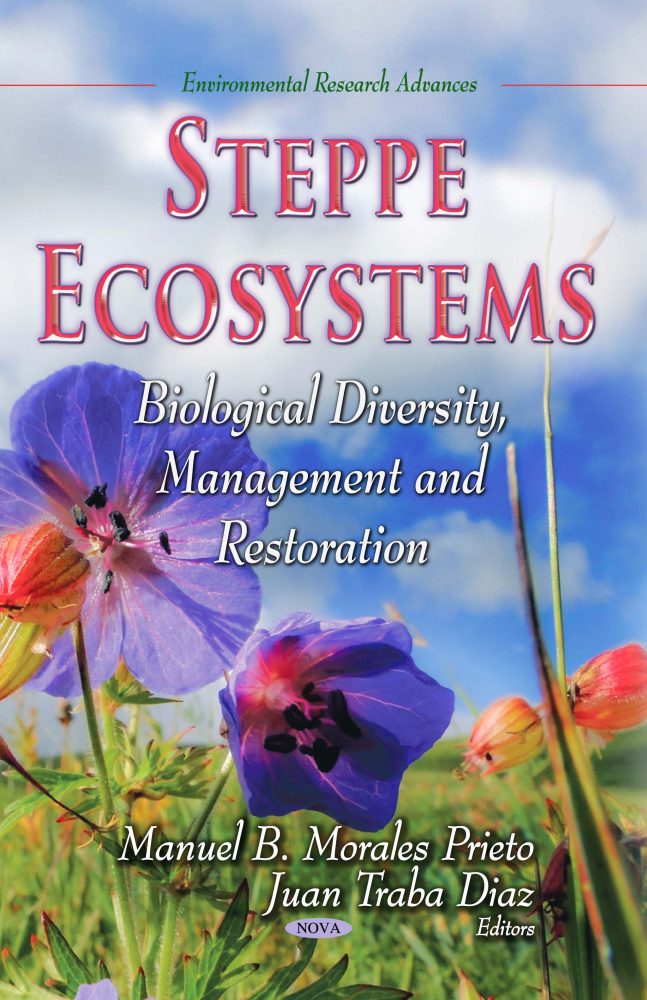View Item
- xmlui.general.dspace_homeCentros Regionales y EEAsCentro Regional Patagonia SurEEA Santa CruzPartes de librosxmlui.ArtifactBrowser.ItemViewer.trail
- DSpace Home
- Centros Regionales y EEAs
- Centro Regional Patagonia Sur
- EEA Santa Cruz
- Partes de libros
- View Item
Diversity patterns in the steppe of Argentinean Southern Patagonia: Environmental drivers and impact of grazing
Abstract
The steppe ecosystem, mainly characterised by the presence of tussock, short grasses and shrubs, covers 85% of the total area in Santa Cruz Province and 25% in Tierra del Fuego Island. Most of the land in the Patagonian region has been influenced by domestic
livestock grazing for more than 100 years. This has led to a substantial modification of the ecosystem and the original floristic patterns. Erosion and degradation processes have occurred in several
[ver mas...]
The steppe ecosystem, mainly characterised by the presence of tussock, short grasses and shrubs, covers 85% of the total area in Santa Cruz Province and 25% in Tierra del Fuego Island. Most of the land in the Patagonian region has been influenced by domestic
livestock grazing for more than 100 years. This has led to a substantial modification of the ecosystem and the original floristic patterns. Erosion and degradation processes have occurred in several areas of Patagonia mainly due to an overestimation of the carrying capacity of these rangelands. In this chapter we review patterns of plant and insect diversity in relation to
environmental drivers and grazing impact in the steppe of Argentinian South Patagonia. In Santa Cruz, results from 141 sites indicated significant interactions between grazing and the abiotic environment (mainly water avalilability) on plant diversity. The complexity of these interactions indicated the need for examining patterns of species turnover at different spatial scales. Analysis of the steppe vegetation patterns from 113 sites along Tierra del Fuego Island demostrated differences related to geographical zones (North, Center, East and South), dominant vegetation types (grasslands, peatlands or shrublands) and disturbance impact (grazing, beavers or burned areas). Because insect diversity of Tierra del Fuego steppes is poorly known, coleopterans were selected as potential indicators of
biodiversity using pitfalls traps in the same vegetation survey sites. We found significant changes in ground-active beetle assemblages generated by grazing and livestock activities, both in grassland, peatlands and shrublands. Therefore, this group of insects
could be useful indicators of biodiversity conservation and ecosystem management.
[Cerrar]

Author
Peri, Pablo Luis;
Lencinas, María Vanessa;
Martínez Pastur, Guillermo José;
Wardell-Johnson, Grant W.;
Lasagno, Romina Gisele;
Fuente
Steppe Ecosystems: Biological Diversity, Management and Restoration / Eds. Morales Prieto M.B. and Traba Díaz J. New York: NOVA Science Publishers, 2013. Chapter 4, p.73-95
Date
2013
Editorial
NOVA Science Publishers
ISBN
978-1-62808-298-2
Formato
pdf
Tipo de documento
parte de libro
Palabras Claves
Derechos de acceso
Restringido
 Excepto donde se diga explicitamente, este item se publica bajo la siguiente descripción: Creative Commons Attribution-NonCommercial-ShareAlike 2.5 Unported (CC BY-NC-SA 2.5)
Excepto donde se diga explicitamente, este item se publica bajo la siguiente descripción: Creative Commons Attribution-NonCommercial-ShareAlike 2.5 Unported (CC BY-NC-SA 2.5)

